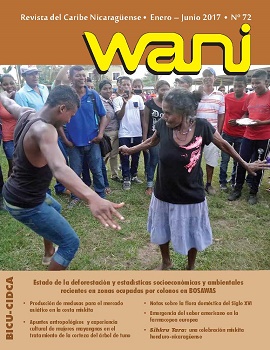Anthropological notes about the “tunidor”: ancestral instrument for treatment of the bark of the tuno
DOI:
https://doi.org/10.5377/wani.v0i72.7434Keywords:
Caribbean Coast, Craftsmanship, Indigenous communities, Mayagnas artisanal instruments, NicaraguaAbstract
This article has its origin in an ethnographic and archaeological discussion of the tunidor, a work instrument whose origin, description, use, and cultural belonging were analyzed by the prestigious American archaeologist Samuel Lothrop in a 1926 publication. Nevertheless the author of this article disagrees in terms of the conclusions of the North American scientist, including the geographical and cultural belonging of the tuner. He even questions that his description of this artifact found, and from which the archaeologist’s conclusions proceed, corresponds exactly to a tunidor. For that reason, it is based on the ancestral use of this instrument by some indigenous towns of Nicaragua, among them, the Mayangnas who have used it artisanal and ancestrally and to the current day in the treatment of the bark of the tuno tree.
Downloads
925
Downloads
Published
How to Cite
Issue
Section
License
Copyright (c) 2019 Bluefields Indian and Caribbean University

This work is licensed under a Creative Commons Attribution-NonCommercial-ShareAlike 4.0 International License.




